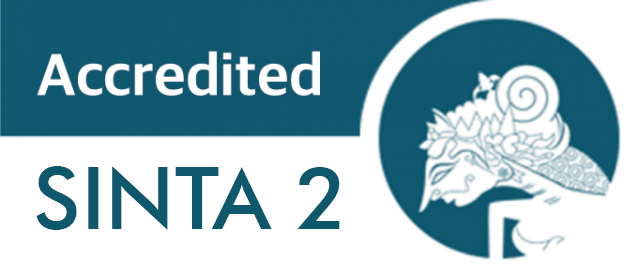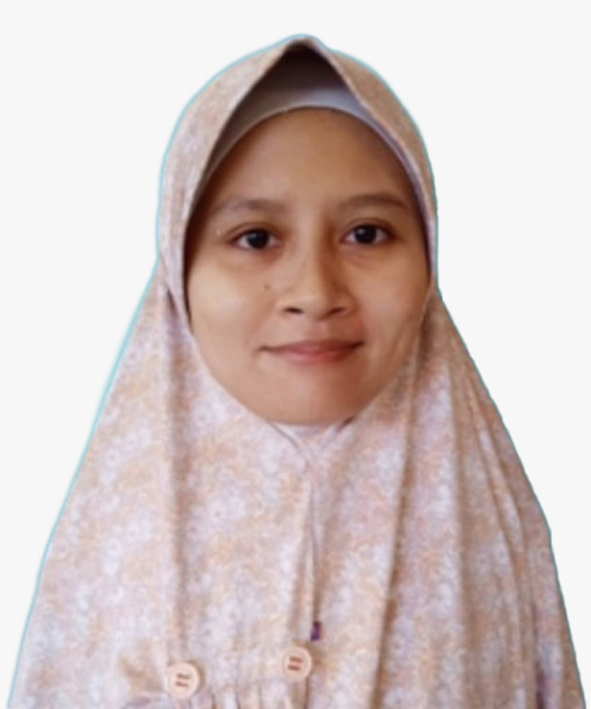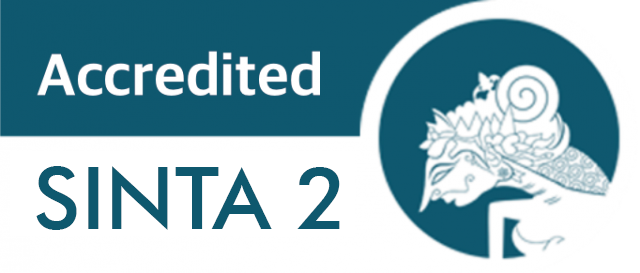The Association between Acne Vulgaris and Stress among Adolescents in Kenjeran, Surabaya
Downloads
Background: Acne vulgaris is the main skin disease problem for adolescents. The complication of acne in adolescents is scars left on the face, which affects stress levels. Stress has harmful potential when the conditions exceed the individual's ability to cope. Kenjeran area has a tropical climate and weather which are the factors that cause acne vulgaris. Objective: This research aims to study the association between acne vulgaris severity and stress among adolescents in Kenjeran, Surabaya Methods: This research used non-probability purposive sampling technique and observational analytic method with cross-sectional design. Assessment of the acne severity was carried out by dermatologist using Lehmann's Grading System and stress levels were assessed using the Perceived Stress Scale questionnaire in 109 adolescent subjects. Results: The highest frequency is women aged 15 years. The dominance is in mild acne severity with moderate stress. It was found that adolescents with acne vulgaris are at risk of experiencing stress even though the analysis of the results using fisher-exact showed that there was no significant association between the acne severity and stress level in adolescents with acne vulgaris (p=0.113). Conclusion: The presence of acne vulgaris puts adolescents at risk of experiencing mild, moderate, or severe stress. It requires attention because can cause adverse effects that affect adolescents into adulthood life.
S. Pengajar and S. Ngudi, "Gangguan Jiwa Terhadap Tindakan Pasung (Studi Kasus di RSJ Amino Gondho Hutomo Semarang) Puji Lestari 1, Zumrotul Choiriyyah 2 , Mathafi 3,” vol. 2, no. 1, 2010.
RISKESDAS, "Hasil Utama Riset Kesehatan Dasar,” Kementrian Kesehat. Republik Indones., pp. 1–100, 2018, doi: 1 Desember 2013.
U. Nations, "Convention on the Rights of Persons with Disabilities and Optional Protocol.”
A. Khadafi, "INDONESIA,” vol. 12, pp. 44–61, 2017.
"IJMS - Indonsian Journal on Medical Science – Volume 1 No 2 – Juli 2014 - ijmsbm.org,” vol. 1, no. 2, pp. 1–10, 2014.
H. R. Watch, "Living in Hell Abuses against People with Psychosocial Disabilities in Indonesia,” Printed in the United States of America, 2014. [Online]. Available: http://www.hrw.org.
N. H. Laila, R. Mahkota, T. Krianto, and S. Shivalli, "Perceptions about pasung (physical restraint and confinement) of schizophrenia patients : a qualitative study among family members and other key stakeholders in Bogor Regency, West Java Province, Indonesia 2017,” Int. J. Ment. Health Syst., pp. 1–7, 2018, doi: 10.1186/s13033-018-0216-0.
A. N. Rahayu, N. H. C. Daulima, and I. Y. Wardhani, "(People with Mental Illness) Paska Pasung dalam Melakukan Rehabilitasi Psikososial hidup, kehidupan yang berkecukupan,” pp. 24–32.
P. Yuliasari, "Hubungan Faktor Dukungan Keluarga dengan Pemulihan Pasien Gangguan Jiwa Pasca Pasung di Puskesmas Laren Kabupaten Lamongan,” Universitas Airlangga, 2019.
L. Asher, A. Fekadu, S. Teferra, M. De Silva, S. Pathare, and C. Hanlon, "‘I cry every day and night, I have my son tied in chains' : physical restraint of people with schizophrenia in community settings in Ethiopia,” pp. 1–14, 2017, doi: 10.1186/s12992-017-0273-1.
K. Kesehatan, "Peraturan Menteri Kesehatan Republik Indonesia Nomor 54 Tahun 2017 tentang Penanggulangan Pemasungan Pada Orang Dengan Gangguan Jiwa,” pp. 1–211, 2017.
D. Kesehatan and P. J. Timur, "Pedoman teknis pembebasan pasien pasung,” 2014.
A. R. et all Dewi, "Managing Family Burden Through Combined Family Psychoeducation and Care Decision Without Pasung Therapies,” Enferm. Clin. 29, pp. 76–80, 2019.
P. Ilmiah, "Promosi kesehatan pada kader kesehatan untuk pencegahan kekambuhan pada pasien pasca pasung,” 2017.
M. Suhron, "Effect Psychoeducation Family on Ability Family in Treating Effect Psychoeducation Family on Ability Family in Treating People with Mental Disorders (People with Mental Illness) Deprived,” no. March, 2017.
T. L. Negara, "Berita Negara Pedoman Pencegahan dan Penanganan Pemasungan bagi Penyandang Disabilitas Mental,” no. 1003, 2018.
S. Ilmu et al., "Implementasi Program Administrasi Terpadu Manajemen Pasung (Atm-Pasung) di Kecamatan Buduran Kabupaten Sidoarjo,” 2014.
A. C. Treatment et al., "Dartmouth Assertive Community Treatment Scale (DACTS),” pp. 1–46, 2017.
D. Schöttle, "Reduction of Involuntary Admissions in Patients With Severe Psychotic Disorders Treated in the ACCESS Integrated Care Model Including Therapeutic Assertive Community Treatment,” vol. 10, no. October, pp. 1–11, 2019, doi: 10.3389/fpsyt.2019.00736.
E. Practices and C. Western, "Community Getting-Started Guide QUESTION 1 :”
J. R. Van Veldhuizen and M. Bahler, "Manual Flexible Assertive Community Treatment ( FACT ),” no. August, 2015, doi: 10.13140/RG.2.1.3925.1683.
L. Dixon, "Assertive Community Treatment:,” vol. 51, no. 6, 2000.
S. Vidal, Assertive Community Programs for Patients with Severe Mental Disorders: Are Benefits Sustained After Discharge?. Community Ment Health J 56, 2020.
J. Aagaard, B. Tuszewski, and P. K. Petersen, "PT NU,” Arch. Psychiatr. Nurs., no. 2016, 2017, doi: 10.1016/j.apnu.2017.07.008.
X. Luo et al., "Effectiveness of an Assertive Community Treatment program for people with severe schizophrenia in mainland China – a 12-month randomized controlled trial,” 2018.
U. A. Botha, L. Koen, U. Galal, E. Jordaan, and D. J. H. Niehaus, "The rise of assertive community interventions in South Africa : a randomized control trial assessing the impact of a modified assertive intervention on readmission rates ; a three year follow-up,” pp. 1–10, 2014.
A. Bussopulos et al., "Effectiveness of integrated care including therapeutic assertive community treatment in severe schizophrenia-spectrum and bipolar I disorders : Four-year follow-up of the ACCESS II study,” pp. 1–14, 2018, doi: 10.1371/journal.pone.0192929.
M. Dieterich, I. Cb, B. Park, and M. Marshall, "Intensive case management for severe mental illness (Review),” no. 10, 2011, doi: 10.1002/14651858.CD007906.pub2.www.cochranelibrary.com.
A. Rahman, C. R. Marchira, and I. Rahmat, "Peran dan motivasi perawat kesehatan jiwa dalam program bebas pasung : studi kasus di Mataram,” pp. 287–294.
I. Sunarno, "Model pemberdayaan masyarakat dalam pembebasan pasung menurut perspektif budaya jawa,” vol. 4, no. 1, pp. 27–43, 2018.
Copyright (c) 2021 Zsa Zsa Ollyvia, Nining Febriyana, Damayanti Damayanti, I Gusti Ayu Indah Ardani

This work is licensed under a Creative Commons Attribution-ShareAlike 4.0 International License.
1. Copyright of this journal is possession of the Author, by the knowledge of the Editorial Board and Journal Manager, while the moral right of the publication belongs to the author.
2. The journal allows the author(s) to retain publishing rights without restrictions.
3. The articles are published under a Creative Commons Attribution Share-Alike (CC BY-SA) license. Many research funding bodies prefer the CC BY-SA license because it allows for maximum dissemination and re-use of open access materials. Users are free to share (copy, distribute, and transmit) and remix (adapt) the contribution under this license, including for commercial purposes, as long as they attribute the contribution in the manner specified by the author or licensor.




























